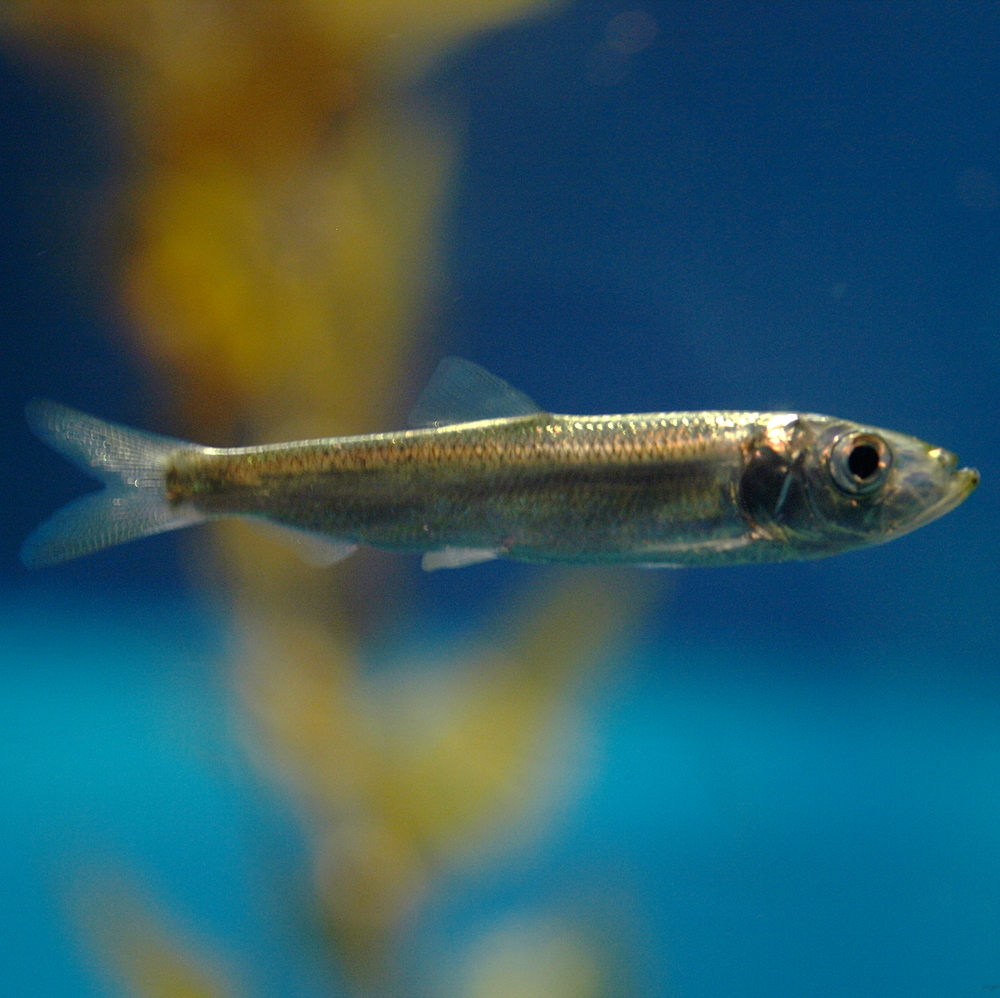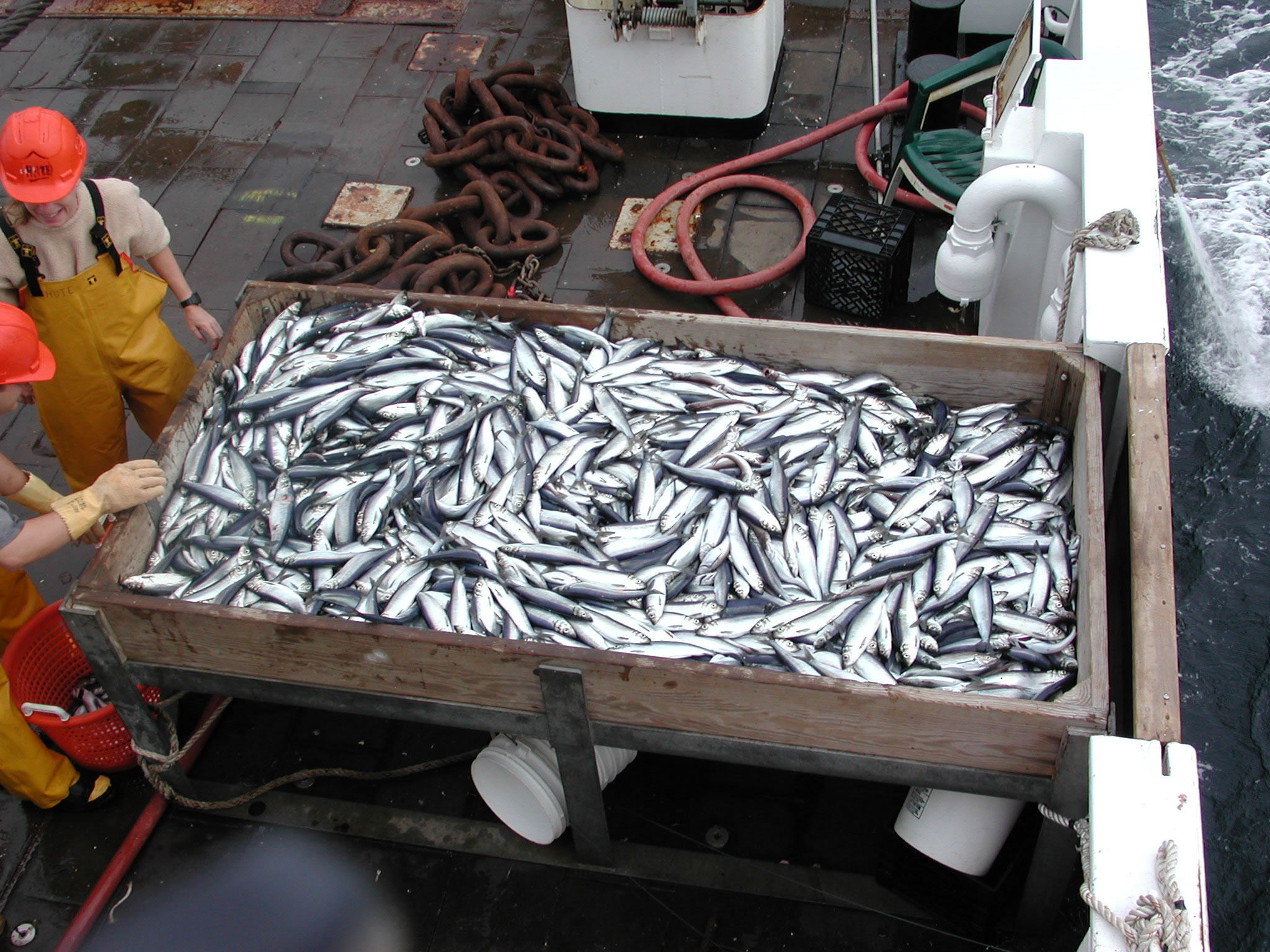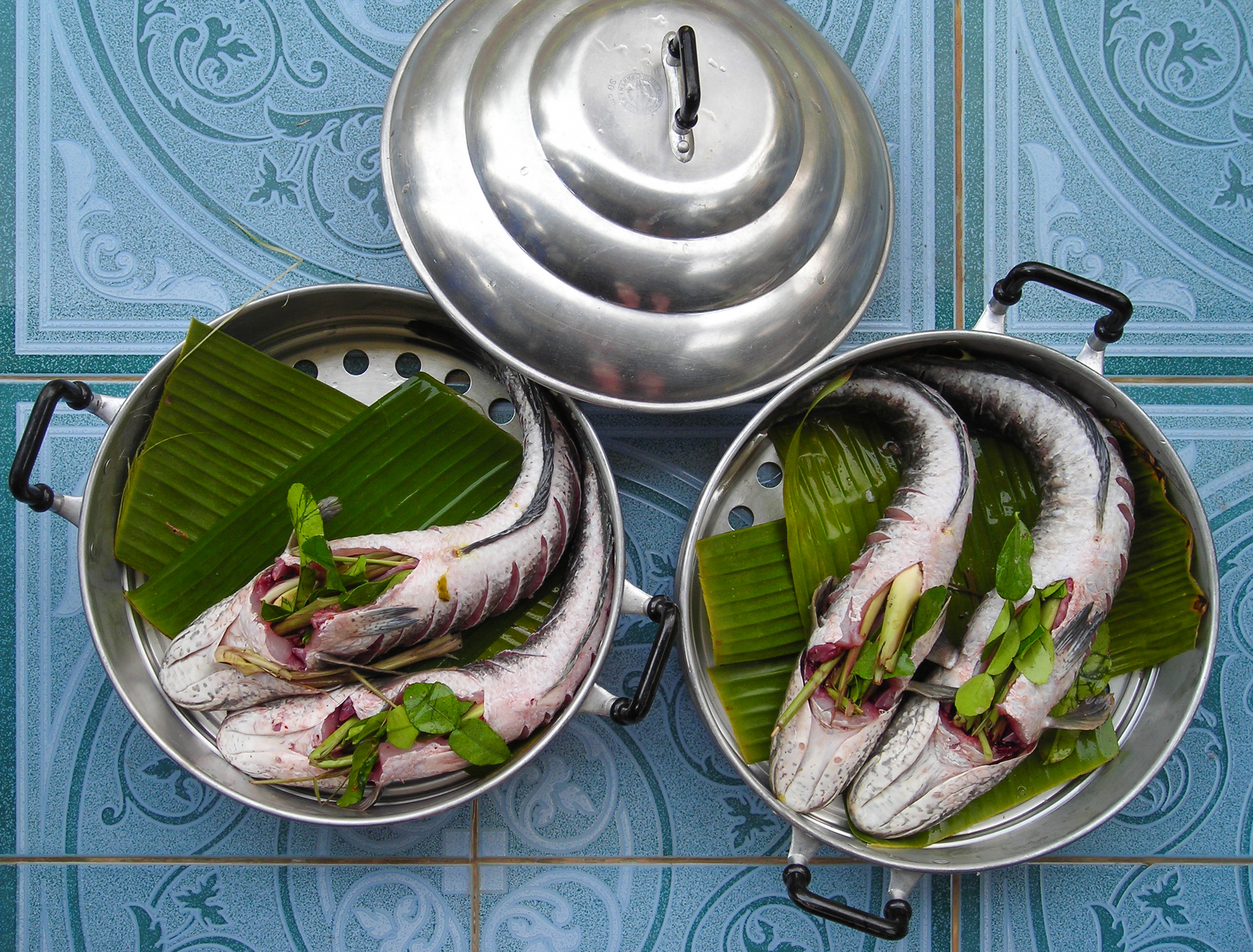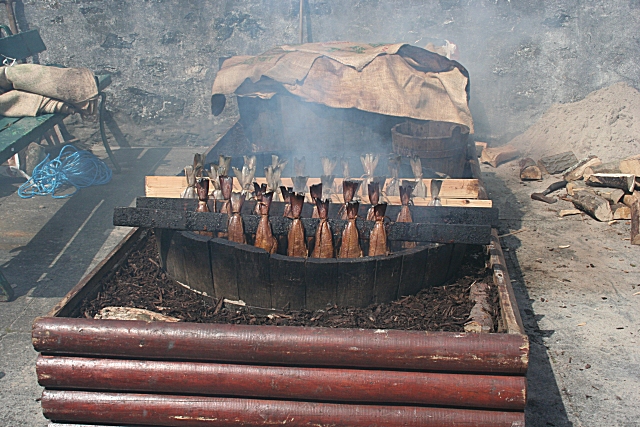|
Herring
Herring are various species of forage fish, belonging to the Order (biology), order Clupeiformes. Herring often move in large Shoaling and schooling, schools around fishing banks and near the coast, found particularly in shallow, temperate waters of the North Pacific Ocean, North Pacific and North Atlantic Oceans, including the Baltic Sea, as well as off the west coast of South America. Three species of ''Clupea'' (the type genus of the herring family Clupeidae) are recognised, and comprise about 90% of all herrings captured in fisheries. The most abundant of these species is the Atlantic herring, which comprises over half of all herring capture. Fish called herring are also found in the Arabian Sea, Indian Ocean, and Bay of Bengal. Herring played an important role in the history of marine fisheries in Europe, and early in the 20th century, their study was fundamental to the development of fisheries science. These oily fish also have a long history as an important food fish, and ... [...More Info...] [...Related Items...] OR: [Wikipedia] [Google] [Baidu] |
Pacific Herring
The Pacific herring (''Clupea pallasii'') is a species of the herring family associated with the Pacific Ocean environment of North America and northeast Asia. It is a silvery fish with unspined fins and a deeply forked caudal fin. The distribution is widely along the California coast from Baja California north to Alaska and the Bering Sea; in Asia, the distribution is south to Japan, Korea, and China. ''Clupea pallasii'' is considered a keystone species because of its very high productivity and interactions with many predators and prey. Pacific herring spawn in variable seasons, but often in the early part of the year in intertidal and sub-tidal environments, commonly on eelgrass, seaweed or other submerged vegetation. They do not die after spawning and can breed in successive years. According to government sources, the Pacific herring fishery collapsed in the year 1993 and is slowly recovering to commercial viability in several North American stock areas. The species is named ... [...More Info...] [...Related Items...] OR: [Wikipedia] [Google] [Baidu] |
Atlantic Herring
Atlantic herring (''Clupea harengus'') is a herring in the family Clupeidae. It is one of the most abundant fish species in the world. Atlantic herrings can be found on both sides of the northern Atlantic Ocean, congregating in large schools. They can grow up to in length and weigh up to . They feed on copepods, krill and small fish, while their natural predators are seals, whales, cod and other larger fish. The Atlantic herring fishery has long been an important part of the economy of New England and the Atlantic provinces of Canada. This is because the fish congregate relatively near to the coast in massive schools, notably in the cold waters of the semi-enclosed Gulf of Maine and Gulf of St. Lawrence. North Atlantic herring schools have been measured up to in size, containing an estimated four billion fish. Description Atlantic herring have a fusiform body. Gill rakers in their mouths filter incoming water, trapping any zooplankton and phytoplankton. Atlantic herri ... [...More Info...] [...Related Items...] OR: [Wikipedia] [Google] [Baidu] |
Forage Fish
Forage fish, also called prey fish or bait fish, are small pelagic fish that feed on planktons (i.e. planktivores) and other small aquatic organisms (e.g. krill). They are in turn preyed upon by various predators including larger fish, seabirds and marine mammals, this making them keystone species in their aquatic ecosystems. The typical ocean forage fish feed at the lower trophic level of the food chain, often by filter feeding. They include particularly fishes of the order Clupeiformes (herrings, sardines, shad, hilsa, menhaden, anchovies, and sprats), but also other small fish, including halfbeaks, Atheriniformes, silversides, Smelt (fish), smelt such as capelin and goldband fusiliers. Forage fish compensate for their small size by forming shoaling and schooling, schools. Some swim in synchronised grids with their mouths open so they can efficiently filter plankton. These schools can become immense Shoaling and schooling, shoals which move along coastlines and Fish migration, ... [...More Info...] [...Related Items...] OR: [Wikipedia] [Google] [Baidu] |
Shoaling And Schooling
In biology, any group of fish that stay together for social reasons are shoaling, and if the group is swimming in the same direction in a coordinated manner, they are schooling. In common usage, the terms are sometimes used rather loosely. About one quarter of fish species shoal all their lives, and about one half shoal for part of their lives. Fish derive many benefits from shoaling behaviour including defence against predators (through better predator detection and by diluting the chance of individual capture), enhanced foraging success, and higher success in finding a mate. It is also likely that fish benefit from shoal membership through increased hydrodynamic efficiency. Fish use many traits to choose shoalmates. Generally they prefer larger shoals, shoalmates of their own species, shoalmates similar in size and appearance to themselves, healthy fish, and kin (when recognized). The oddity effect posits that any shoal member that stands out in appearance will be preferen ... [...More Info...] [...Related Items...] OR: [Wikipedia] [Google] [Baidu] |
Pickled Herring
Pickled herring is a traditional way of preserving herring as food by pickling or Curing (food preservation), curing. Most cured herring uses a two-step curing (food preservation), curing process: it is first cured with salt to extract water; then the salt is removed and the herring is brining, brined in a vinegar, salt, and sugar solution, often with peppercorn, bay leaf, bay leaves, raw onions, and so on. Additional flavourings include sherry, Mustard (condiment), mustard and dill, while other non-traditional ingredients have also begun being included in recent years. Pickled herring remains a popular food or ingredient to dishes in many parts of Europe including Scandinavia, Great Britain, the Baltic, Eastern and Central Europe, as well as the Netherlands. It is also popular in parts of Canada such as British Columbia and Newfoundland. It is also associated with Ashkenazi Jewish cuisine, becoming a staple at kiddushes and social gatherings. Pickled herring is one of the Twelve ... [...More Info...] [...Related Items...] OR: [Wikipedia] [Google] [Baidu] |
Clupea
''Clupea'' is genus of planktivorous bony fish belonging to the family Clupeidae, commonly known as herrings. They are found in the shallow, temperate waters of the North Pacific and the North Atlantic oceans, including the Baltic Sea. Two main species of ''Clupea'' are currently recognized: the Atlantic herring (''Clupea harengus'') and the Pacific herring (''Clupea pallasii''), which have each been divided into subspecies. Herrings are forage fish moving in vast schools, coming in spring to the shores of Europe and America, where they form important commercial fisheries. Morphology The species of ''Clupea'' belong to the larger family Clupeidae (herrings, shads, sardines, menhadens), which comprises some 200 species that share similar features. They are silvery-colored fish that have a single dorsal fin, which is soft, without spines. They have no lateral line and have a protruding lower jaw. Their size varies between subspecies: the Baltic herring (''Clupea harengus membras ... [...More Info...] [...Related Items...] OR: [Wikipedia] [Google] [Baidu] |
Food Fish
Many species of fish are caught by humans and consumed as food in virtually all regions around the world. Their meat has been an important dietary source of protein and other nutrients in the human diet. The English language does not have a special culinary name for food prepared from fish like with other animals (as with '' pig'' vs. ''pork''), or as in other languages (such as Spanish '' pez'' vs. '' pescado''). In culinary and fishery contexts, ''fish'' may include so-called shellfish such as molluscs, crustaceans, and echinoderms; but, more expansively, ''seafood'' covers both fish and other marine life used as food. Since 1961, the average annual increase in global apparent food fish consumption (3.2 percent) has outpaced population growth (1.6 percent) and exceeded the increase in consumption of meat from all terrestrial animals except poultry (4.9 percent), both combined (2.8 percent) and individually (bovine, ovine, porcine, et cetera). In ''per capita'' terms, food f ... [...More Info...] [...Related Items...] OR: [Wikipedia] [Google] [Baidu] |
Clupeidae
Clupeidae is a family of clupeiform ray-finned fishes, comprising, for instance, the herrings and sprats. Many members of the family have a body protected with shiny cycloid (very smooth and uniform) scales, a single dorsal fin, and a fusiform body for quick, evasive swimming and pursuit of prey composed of small planktonic animals. Due to their small size and position in the lower trophic level of many marine food webs, the levels of methylmercury they bioaccumulate are very low, reducing the risk of mercury poisoning when consumed. The earliest known fossil members of this group are the stem-clupeids '' Italoclupea'' and '' Lecceclupea'' from the late Campanian/early Maastrichtian of Italy.'''' Description and biology Clupeids are mostly marine forage fish, although a few species are found in fresh water. No species has scales on the head, and some are entirely scaleless. The lateral line is short or absent, and the teeth are unusually small where they are present at all. ... [...More Info...] [...Related Items...] OR: [Wikipedia] [Google] [Baidu] |
Clupeiformes
Clupeiformes is the order of ray-finned fish that includes the herring family, Clupeidae, and the anchovy family, Engraulidae and sardines. The group includes many of the most important forage and food fish. Clupeiformes are physostomes, which means that their gas bladder has a pneumatic duct connecting it to the gut. They typically lack a lateral line, but still have the eyes, fins and scales that are common to most fish, though not all fish have these attributes. They are generally silvery fish with streamlined, spindle-shaped bodies, and they often school. Most species eat plankton which they filter from the water with their gill rakers. The former order of Isospondyli was subsumed mostly by Clupeiformes, but some isospondylous fishes (isospondyls) were assigned to Osteoglossiformes, Salmoniformes, Cetomimiformes, etc. Their sister group were the extinct Ellimmichthyiformes, which were dominant throughout much of the Cretaceous and into the Paleogene, and o ... [...More Info...] [...Related Items...] OR: [Wikipedia] [Google] [Baidu] |
Smoked Fish
Smoked fish is fish that has been cured by smoking. Foods have been smoked by humans throughout history. Originally this was done as a preservative. In more recent times, fish is readily preserved by refrigeration and freezing and the smoking of fish is generally done for the unique taste and flavour imparted by the smoking process. Smoking process According to Jeffrey J. Rozum, "The process of smoking fish occurs through the use of fire. Wood contains three major components that are broken down in the burning process to form smoke. The burning process is called pyrolysis, which is simply defined as the chemical decomposition by heat. The major wood components are cellulose, hemicellulose and lignin."Ingredients in Meat Products, Properties, Functionality and Applications [] "The major steps in the preparation of smoked fish are salting (bath or injection of liquid brine or dry salt mixture), cold smoking, cooling, packaging (air/vacuum or modified), and storage. Smoking, o ... [...More Info...] [...Related Items...] OR: [Wikipedia] [Google] [Baidu] |
North Atlantic Ocean
The Atlantic Ocean is the second largest of the world's five oceanic divisions, with an area of about . It covers approximately 17% of Earth's surface and about 24% of its water surface area. During the Age of Discovery, it was known for separating the New World of the Americas (North America and South America) from the Old World of Afro-Eurasia (Africa, Asia, and Europe). Through its separation of Afro-Eurasia from the Americas, the Atlantic Ocean has played a central role in the development of human society, globalization, and the histories of many nations. While the Norse were the first known humans to cross the Atlantic, it was the expedition of Christopher Columbus in 1492 that proved to be the most consequential. Columbus's expedition ushered in an age of exploration and colonization of the Americas by European powers, most notably Portugal, Spain, France, and the United Kingdom. From the 16th to 19th centuries, the Atlantic Ocean was the center of both an eponymous ... [...More Info...] [...Related Items...] OR: [Wikipedia] [Google] [Baidu] |
LC IUCN 3 1
LC or Lc may refer to: Arts and entertainment * Library of Congress Classification, a system of library classification Gaming and play * Lego Chess, a Lego-based chess video game * Lego City, a theme of Lego * Lego Creator, a theme of Lego * ''Lego Creator'' (video game), a Lego video game * Limbus Company, a strategy role-playing video game * Lethal Company, an early access cooperative survival horror video game * Liberty City (Grand Theft Auto), a fictional city in the ''Grand Theft Auto'' computer and video game series Music * ''LC'' (album), 1981 album by The Durutti Column * Lacuna Coil, an Italian gothic metal band * Living Colour, an American hard rock band formed in New York * Los Campesinos!, a British indie-rock band formed in Cardiff In other media * Licensed Companion, from the '' In Death'' novels of J.D. Robb (Nora Roberts) * Shop LC, a 24/7 American shopping television channel Businesses, organisations, and government agencies Government agencies * Irish ... [...More Info...] [...Related Items...] OR: [Wikipedia] [Google] [Baidu] |







